When we did this photo shoot, Jeremy Buhler and I were practicing together for the first time to get ready for the Wrangler National Finals Rodeo, which was just a few days away. With the short score in Vegas—not that different from the score most ropers see at the World Series of Team Roping or USTRC events—I was really focusing on getting a smooth, flat start and handling my steers for my heeler. In this article, I’ll tell you what I focus on to give myself the best shot every time and to do the same for my partner.
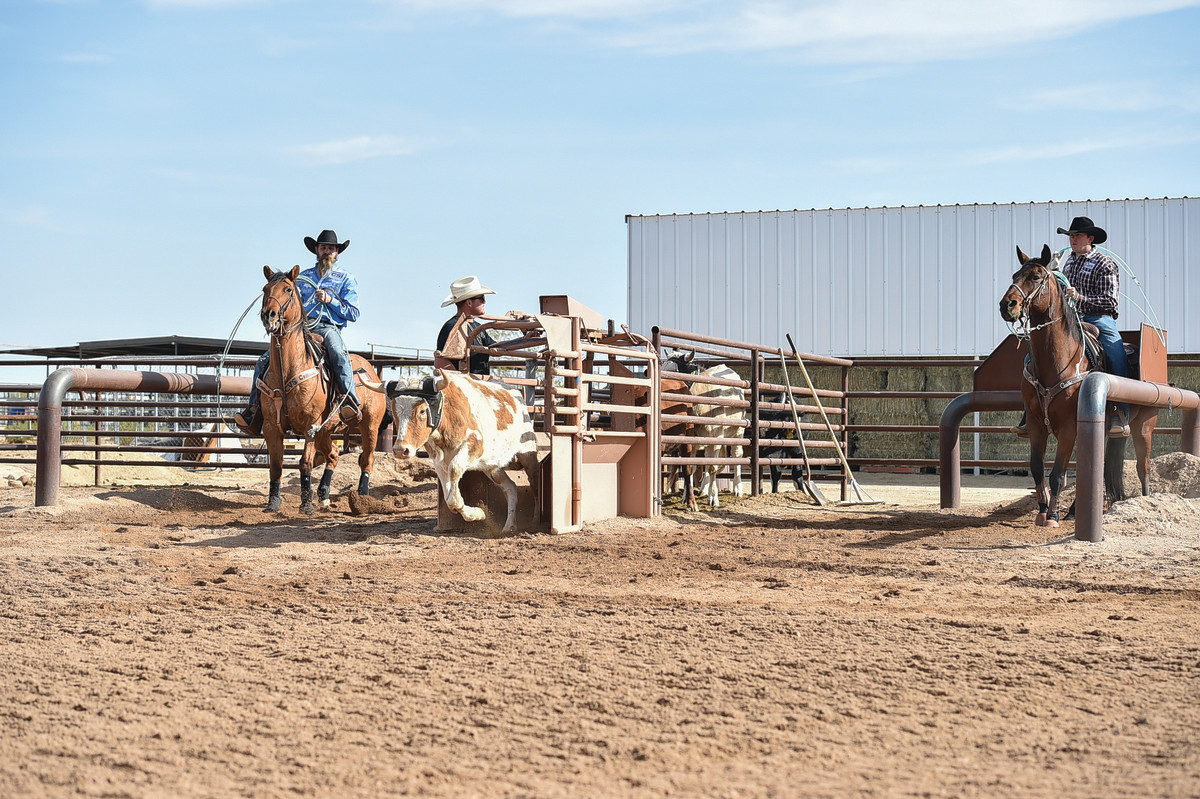
1. I really want my horse leaving flat and leaving off my hand. On short scores, I want to be able to throw fast, and I don’t want to be rocked back in my seat or I’ll be late. To achieve that, I make sure my horse is looking where I want to go, not turned to the right or left, but straight at the steer. If I get to pulling on a horse too much and he’s crammed in the corner, then he would squat and have to stand up before he could run. That would put me behind from the start.
When I nod, I try to pick up, just a hair, with my left hand and hold it right there, not with a whole bunch of pressure, but enough so he feels that I don’t want him leaving yet. I try not to move a muscle, and I like to be sitting straight up and down, if not just a touch forward. I want my feet slightly behind me, with the same amount of weight in both stirrups.
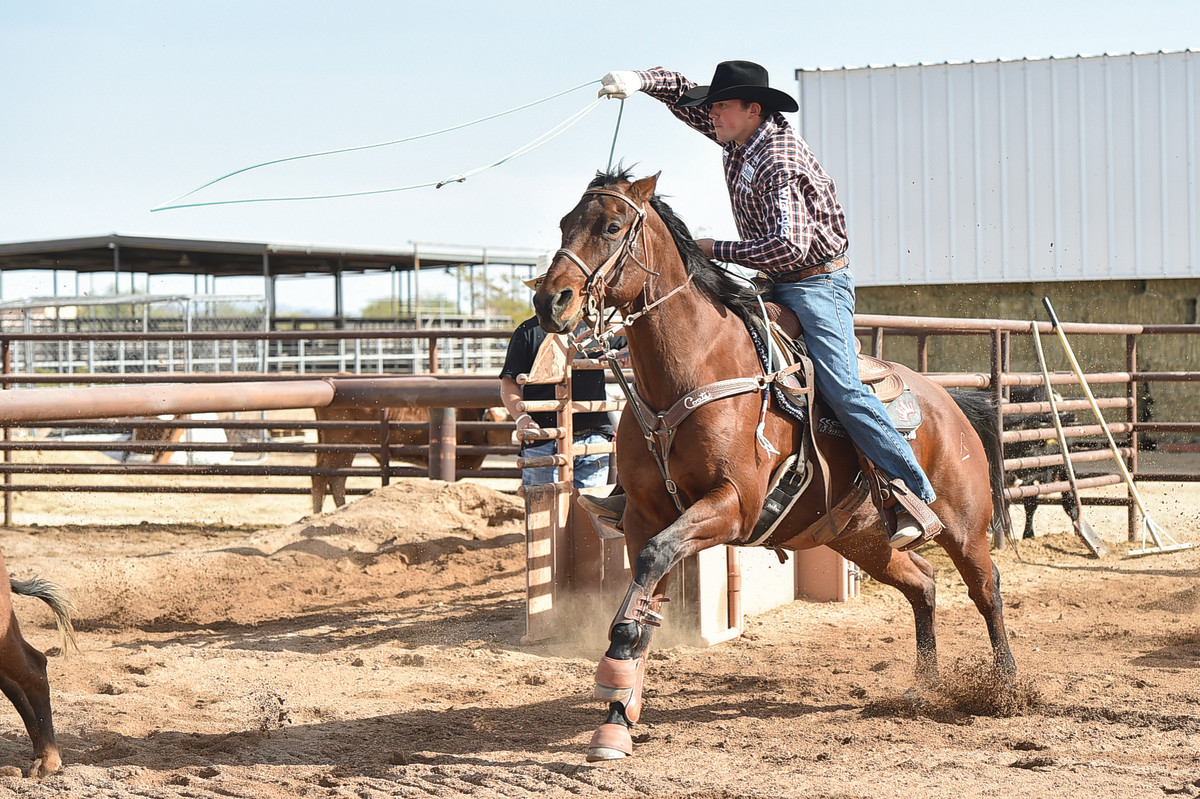
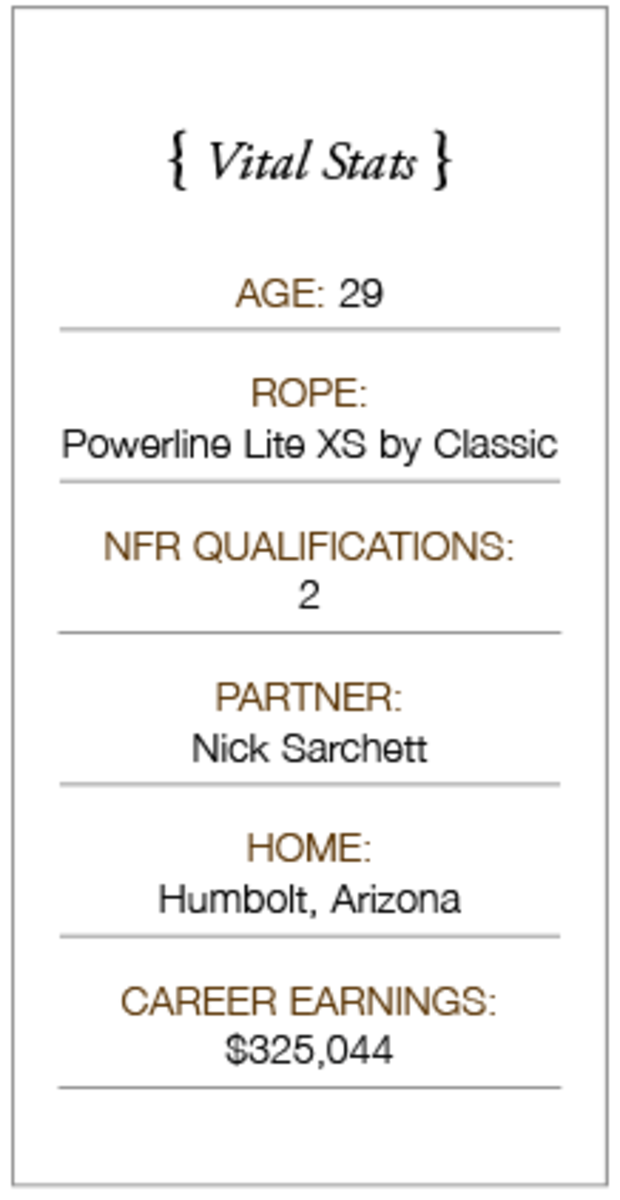
2. From the time I drop my hand leaving, I don’t want to touch my horse again until I rope the steer. That’s something I try to work on a lot. My horse’s reward is that he gets to run. I try to give him his head leaving there. If he does something wrong, I correct it. I give him his head until I throw. The more you pull, the stronger your horse gets, or else he’ll duck. Also, I try to stay square with my upper body. That keeps my power with my rope. If I get leaned out there with my right shoulder, I don’t have as much power to throw.
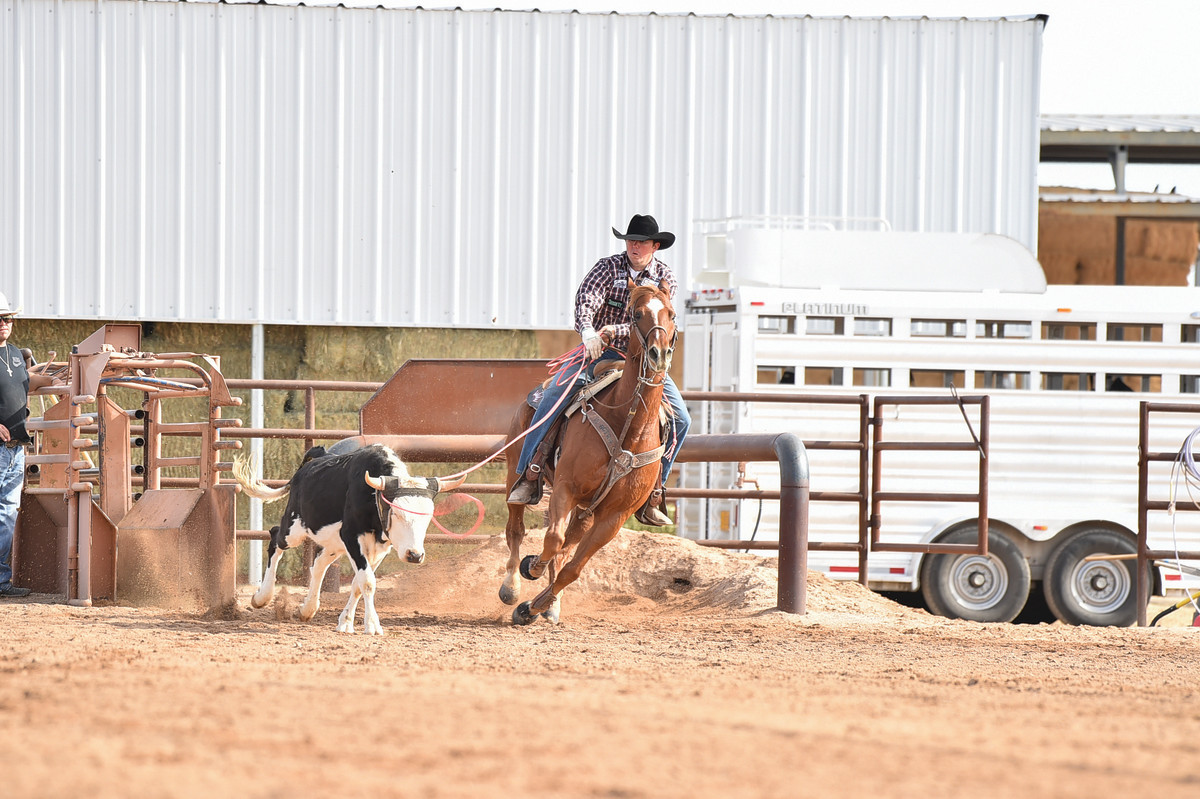
3. In this photo, you can see I’m coming with it pretty quickly, but my horse is still running straight. I was able to get him caught so soon because my horse left flat and was still running to the steer with his shoulders up. This horse is a running horse, and he likes to run more and keep running. I watched a lot of Speed Williams’ stuff, and he’ll reach and just keep going straight. So, I’ll really reach and just keep going forward and keep my horses thinking about going forward more than ducking.
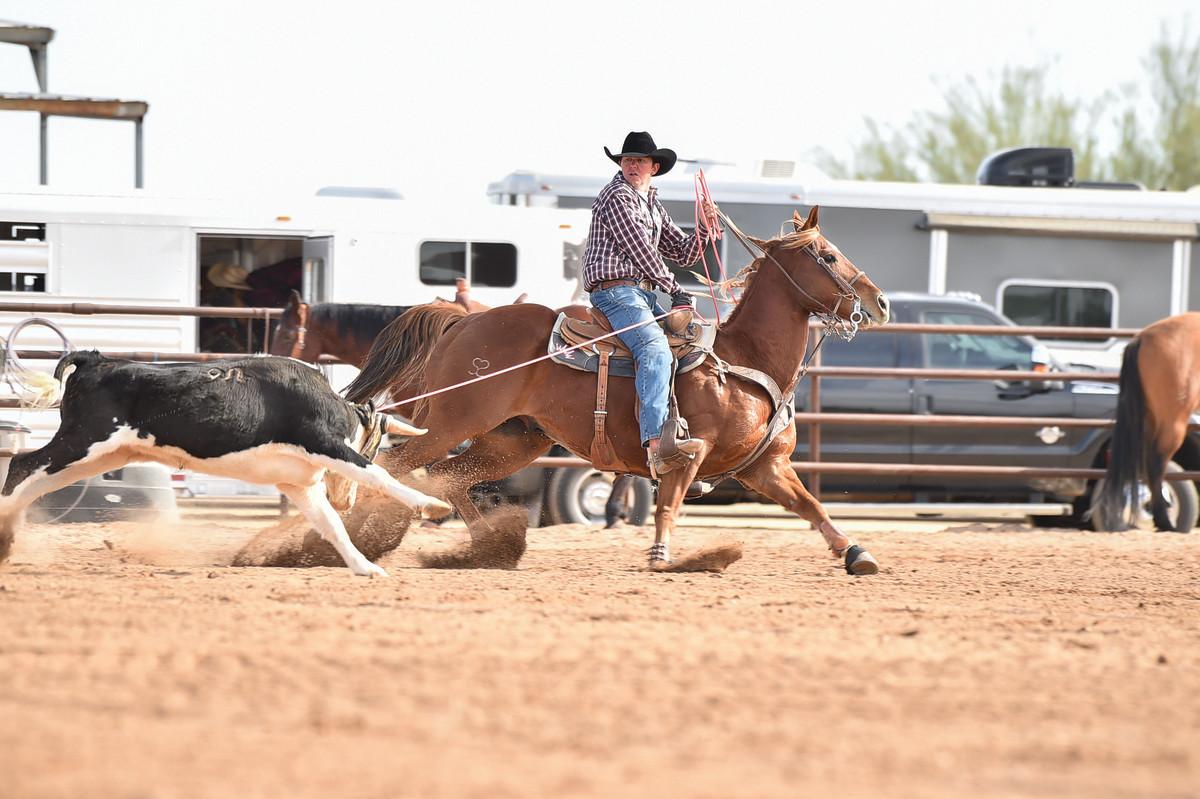
4. When I rope, I cross my hands—that slows that steer down a little bit by keeping my horse going forward with his shoulders up, letting my partner heel him faster. Pushing forward with my feet keeps my horse using his butt with his shoulders up, giving me more control of the steer’s hop better for my heeler. Even when we’re going pretty fast, this makes the steer easier to heel.
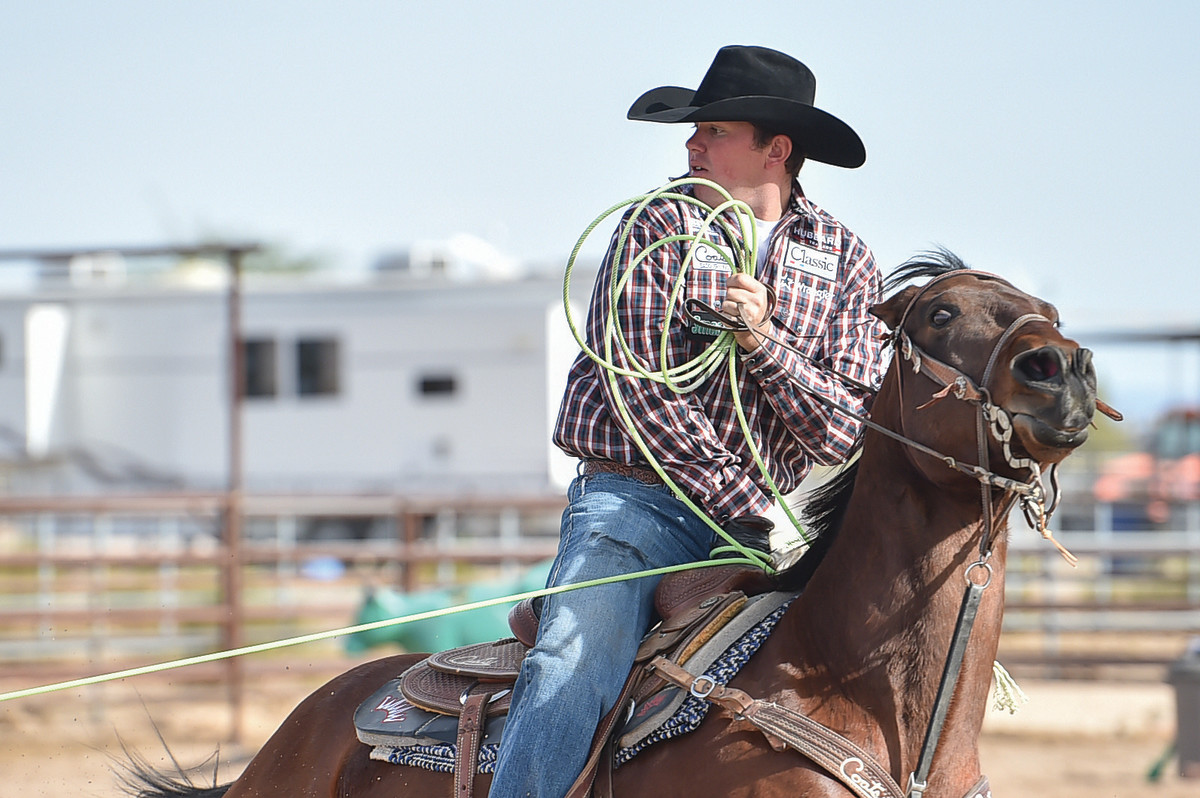
5. One thing I work on across the pen is keeping my horse’s nose slightly to the right. If I can get my horse’s nose to the right, I’m halfway faced just crossing the pen. I like that feel. I leave both my reins even on good horses because they know that move, but on young horses I will shorten the right rein to teach it. I make sure my horse sidepasses well, and I lope around to the left with my horse’s head to the right.









